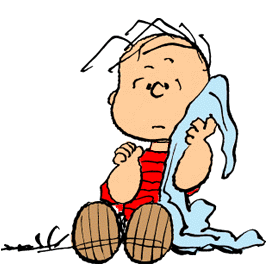I've had a hard time getting to writing this, primarily due to the fact I rarely wrote about Andersen's book while I was reading. Usually I'll take down a reaction, write something to keep my mind active and enhance the reading experience, but for these, I just read and laid back and enjoyed. These are dark, imaginative tales full of the most blessedly amazingly visual imagery you can come across, which respect children and provide intrigue for adults. And they are truly to be taken in, pondered, and enjoyed, and my own personal writing about them comes very secondary to digesting and feeling them.
In the Penguin Deluxe Classic, or the Graphic Classic, there is an extensive introduction plus a bevy of notes in the back which put these fairy tales into perfect context. Even if you're familiar with "The Ugly Duckling" or "Thumbelina" via other interpretations, movies, etc., this is the ultimate way to experience them -- from the author who perfected them with commentary that lets you understand why he went through the trouble. From his closeted homosexuality to his intense longing and self-mocking ways, you can feel the humanbeing in Andersen whereas before he's always been some mystical character full of magic and decidedly unreal.
The overriding themes of the collection tend to be alienation, the power of love (or art), and the appreciation for what one has. The imagery that accompanies these things, such as the mermaid of "The Little Mermaid" turning into suds on the water when she dies without her love the prince, or the tine soldier and ballerina being cooked and killed in the over of "The Steadfast Tin Soldier" (he melting into a heart, her going to ash), show the true anguish Andersen wished to express and drove his themes home and, at the same time, capture any reader of the past 150 years. Still, nothing beats the image of the ugly duckling alone, in wintertime, swimming circles in a pond that's slowly freezing around him, the hole he's swimming in getting smaller and smaller until he is frozen in it. That vision of loneliness and alienation in the face of unruly hate in the world is a timeless picture of the forever state of humanity.
So here are my five favorites of the collection with a quick word why I liked it so much:
"The Ice Maiden": The best of the longer writings, the wintry images along with the concept of death coming from under and grabbing you with no regard to your current life situation even vaguely hints at the absurdity of life through all the romantic visions and distinct chivalry.
"The Ugly Duckling": Who'd want to be a regular duck and have it that easy, when one can find out (s)he's a swan? Dumb mainstream society doesn't know what it has in us.
"The Little Mermaid": The mute girls can't express her love to the only one she wants, the power in the anguish here is unparalleled throughout the story and easily relateable to a sucker like me.
"The Fir Tree": Because we all get chopped up and burnt-up before we know it. Better enjoy our forest while we can!
"The Travelling Companion": For the love of Karma, treat people well! Shows Andersen's anguish toward the royal man he loved so but could not truly have, but that's not exactly why I love it. It's the queen getting beaten, the princess getting trounced! Wenches, pretentious wenches, take that! And all the death imagery is harrowing wonderful. The men who failed to win the princess hanging from trees all around.
And if I can have a bonus sixth, "The Match Girl" pays homage to the lonely world of the child, with the most sublime passing over after a life of poverty and abuse, into the arms of the only one who genuinely cared for her, her grandmother.
It was a delight to read all of these stories, and it will be a delight to revisit them over and over as we have been doing for over a century.
"It doesn't matter if you're born in a duck yard when you've been lying inside a swan's egg."

No comments:
Post a Comment